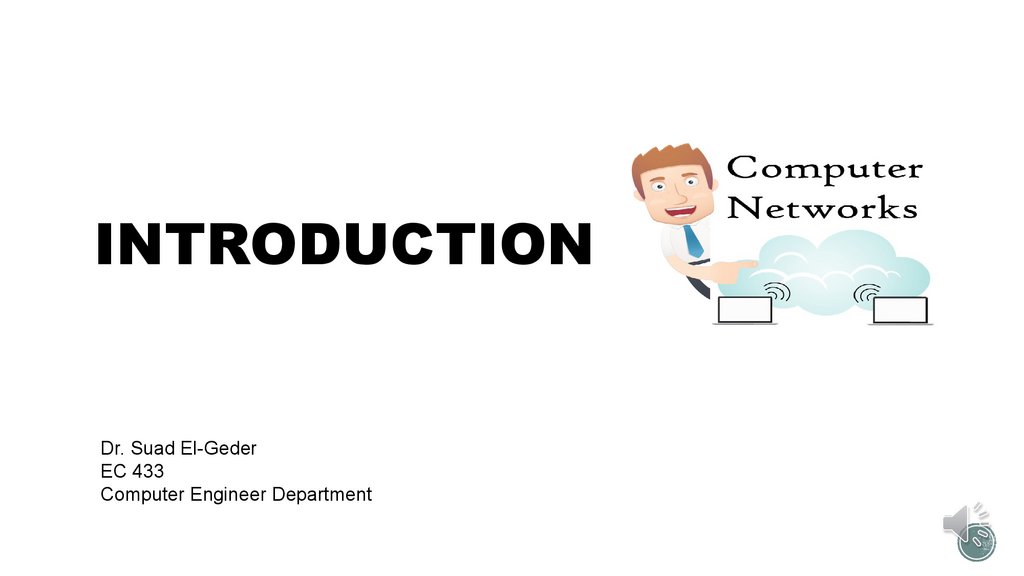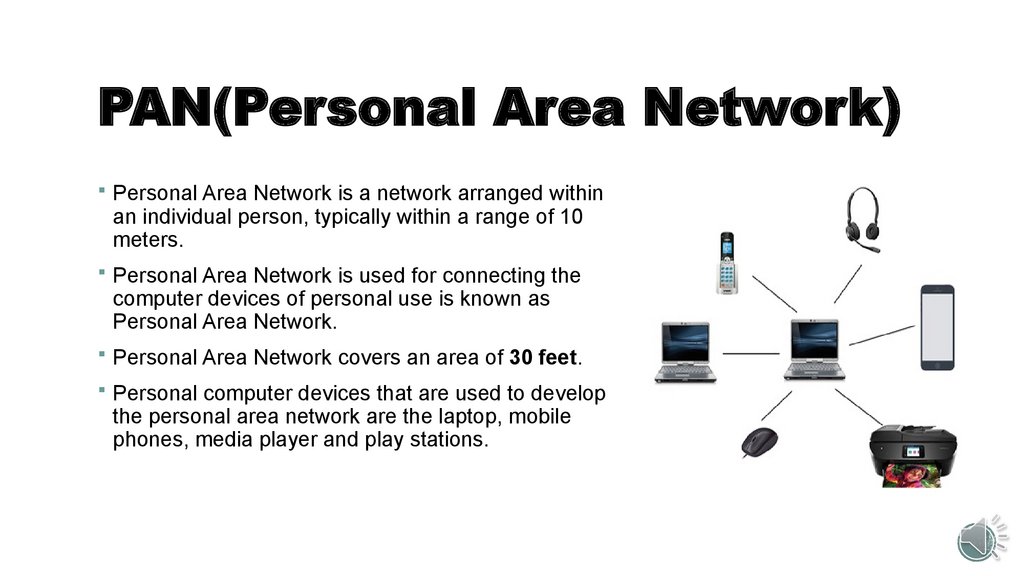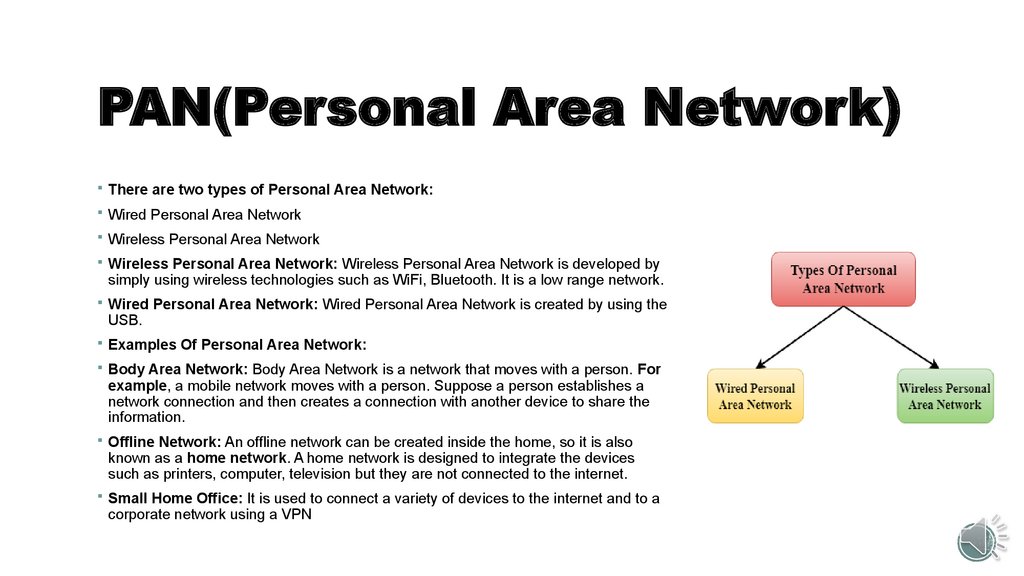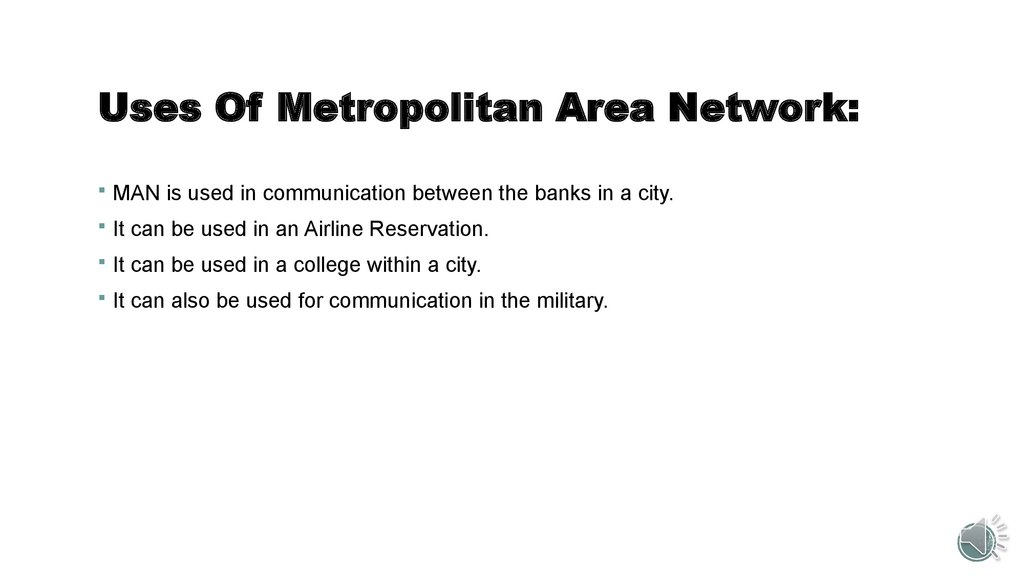Похожие презентации:
Introduction Dr. Suad El-Geder
1.
INTRODUCTIONDr. Suad El-Geder
EC 433
Computer Engineer Department
2.
What is a Computer Network?Computer Networking : refers to connected computing devices
(such as laptops, desktops, servers, smartphones, and tablets)
and an ever-expanding array of IoT devices (such as cameras,
door
locks,
doorbells,
refrigerators,
audio/visual
systems,
thermostats, and various sensors) that communicate with one
another.
The aim of the computer network is the sharing of resources
among various devices.
In the case of computer network technology, there are several
types of networks that vary from simple to complex level.
3.
Components Of ComputerNetwork:
NIC(Network
Interface card)
A network interface card (NIC) is a hardware component without which a computer cannot be connected over a network.
It is a circuit board installed in a computer that provides a dedicated network connection to the computer.
It is also called network interface controller, network adapter or LAN adapter.
NIC is a device that helps the computer to communicate with another device. T he
main purpose of NIC is to format the data,
send the data and receive the data at the receiving node.
There are two types of NIC: wireless NIC and wired NIC.
Wireless NIC: All the modern laptops use the wireless NIC. In Wireless NIC, a connection is made using the antenna that
employs the radio wave technology.
Wired NIC: Cables use the wired NIC to transfer the data over the medium.
4.
Components Of Computer Network:Hub is a central device that splits the network connection into multiple devices.
When computer requests for information from a computer, it sends the request to the Hub.
Hub distributes this request to all the interconnected computers.
Switch is a networking device that groups all the devices over the network to transfer the data to another device.
A switch is better than Hub as it does not broadcast the message over the network,
i.e., it sends the message to the device for which it belongs to.
Therefore, we can say that switch sends the message directly from source to the destination.
5.
Components Of Computer Network:Cable is a transmission media that transmits the communication signals. There are three types of cables:
Twisted pair cable: It is a high-speed cable that transmits the data over 1Gbps or more.
Coaxial cable: Coaxial cable resembles like a TV installation cable.
Coaxial cable is more expensive than twisted pair cable, but it provides the high data transmission speed.
Fibre optic cable: Fibre optic cable is a high-speed cable that transmits the data using light beams. It provides high data transmission
speed as compared to other cables. It is more expensive as compared to other cables, so it is installed at the government level.
Router is a device that connects the LAN to the internet.
The router is mainly used to connect the distinct networks or connect the internet to multiple computers.
Modem connects the computer to the internet over the existing telephone line.
A modem is not integrated with the computer motherboard.
A modem is a separate part on the PC slot found on the motherboard.
6.
Uses Of Computer NetworkResource sharing: Resource sharing is the sharing of resources such as programs, printers, and data among the
users on the network without the requirement of the physical location of the resource and user.
Server-Client model: Computer networking is used in the server-client model. A server is a central computer used to
store the information and maintained by the system administrator. Clients are the machines used to access the
information stored in the server remotely.
Communication medium: Computer network behaves as a communication medium among the users. For example, a
company contains more than one computer has an email system which the employees use for daily communication.
E-commerce: Computer network is also important in businesses. We can do the business over the internet. For
example, amazon.com is doing their business over the internet, i.e., they are doing their business over the internet.
7.
Protocols and StandardsProtocols/Network Protocols are defined as a set of rules that determines how electronic messages should be packed,
addressed and sent through a network for successful data communication. The protocols accepted by vendors and
manufacturers are called standards.
Suppose one person speaks English and the other person speaks Arabic. To understand each other, they need a
translator. Same is the case with computers too. Both sender and receiver should be agreed upon some protocols so that
both the sender and receiver can interpret and process the data.
8.
Computer Network ArchitectureComputer Network Architecture is defined as the physical and logical design of the
software, hardware, protocols, and media of the transmission of data. Simply we can
say that how computers are organized and how tasks are allocated to the computer.
The two types of network architectures are used
Peer-To-Peer network
Client/Server network
9.
Peer-To-Peer networkPeer-To-Peer network is a network in which all the computers are linked
together with equal privilege and responsibilities for processing the data.
Peer-To-Peer network is useful for small environments, usually up to 10
computers.
Peer-To-Peer network has no dedicated server.
Special permissions are assigned to each computer for sharing the resources,
but this can lead to a problem if the computer with the resource is down.
10.
Peer-To-Peer networkAdvantages Of Peer-To-Peer Network:
It is less costly as it does not contain any
dedicated server.
If one computer stops working but, other
computers will not stop working.
Disadvantages Of Peer-To-Peer Network:
In the case of Peer-To-Peer network, it does
not
contain
the
centralized
system
.
Therefore, it cannot back up the data as the
data is different in different locations.
It has a security issue as the device is
It is easy to set up and maintain as each
computer manages itself.
managed itself.
11.
Client/Server NetworkClient/Server network is a network model designed for the end
users called clients, to access the resources such as songs,
video, etc. from a central computer known as Server.
The central controller is known as a server while all other
computers in the network are called clients.
A server performs all the major operations such as security and
network management.
A server is responsible for managing all the resources such as
files, directories, printer, etc.
All the clients communicate with each other through a server.
For example, if client1 wants to send some data to client 2, then
it first sends the request to the server for the permission. The
server sends the response to the client 1 to initiate its
communication with the client 2.
12.
Client/Server NetworkAdvantages Of Client/Server network:
A
Client/Server network contains the centralized
system. Therefore we can back up the data easily.
A Client/Server network has a dedicated server that
improves the overall performance of the whole system.
Disadvantages Of Client/Server network:
Client/Server network is expensive as it requires
the server with large memory.
A server has a Network Operating System(NOS)
to provide the resources to the clients, but the
cost of NOS is very high.
Security is better in Client/Server network as a single
server administers the shared resources.
It also increases the speed of the sharing resources.
It requires a dedicated network administrator to
manage all the resources.
13.
Computer Network TypesA computer network is a group of computers linked to each
other that enables the computer to communicate with another
computer and share their resources, data, and applications.
A computer network can be categorized by their size. A
computer network is mainly of four types:
LAN(Local Area Network)
PAN(Personal Area Network)
MAN(Metropolitan Area Network)
WAN(Wide Area Network)
14.
LAN(Local Area Network)Local Area Network is a group of computers connected
to each other in a small area such as building, office.
LAN is used for connecting two or more personal
computers through a communication medium such as
twisted pair, coaxial cable, etc.
It is less costly as it is built with inexpensive hardware
such as hubs, network adapters, and ethernet cables.
The data is transferred at an extremely faster rate in
Local Area Network.
Local Area Network provides higher security.
15.
PAN(Personal Area Network)Personal Area Network is a network arranged within
an individual person, typically within a range of 10
meters.
Personal Area Network is used for connecting the
computer devices of personal use is known as
Personal Area Network.
Personal Area Network covers an area of 30 feet.
Personal computer devices that are used to develop
the personal area network are the laptop, mobile
phones, media player and play stations.
16.
PAN(Personal Area Network)There are two types of Personal Area Network:
Wired Personal Area Network
Wireless Personal Area Network
Wireless Personal Area Network: Wireless Personal Area Network is developed by
simply using wireless technologies such as WiFi, Bluetooth. It is a low range network.
Wired Personal Area Network: Wired Personal Area Network is created by using the
USB.
Examples Of Personal Area Network:
Body Area Network: Body Area Network is a network that moves with a person. For
example, a mobile network moves with a person. Suppose a person establishes a
network connection and then creates a connection with another device to share the
information.
Offline Network: An offline network can be created inside the home, so it is also
known as a home network. A home network is designed to integrate the devices
such as printers, computer, television but they are not connected to the internet.
Small Home Office: It is used to connect a variety of devices to the internet and to a
corporate network using a VPN
17.
MAN(Metropolitan AreaNetwork)
A metropolitan area network is a network
that covers a larger geographic area by
interconnecting a different LAN to form a
larger network.
Government agencies use MAN to connect to
the citizens and private industries.
In MAN, various LANs are connected to each
other through a telephone exchange line.
The most widely used protocols in MAN are
RS-232, Frame Relay, ATM, ISDN, OC-3, ADSL,
etc.
It has a higher range than Local Area
18.
Uses Of Metropolitan Area Network:MAN is used in communication between the banks in a city.
It can be used in an Airline Reservation.
It can be used in a college within a city.
It can also be used for communication in the military.



















 Интернет
Интернет








